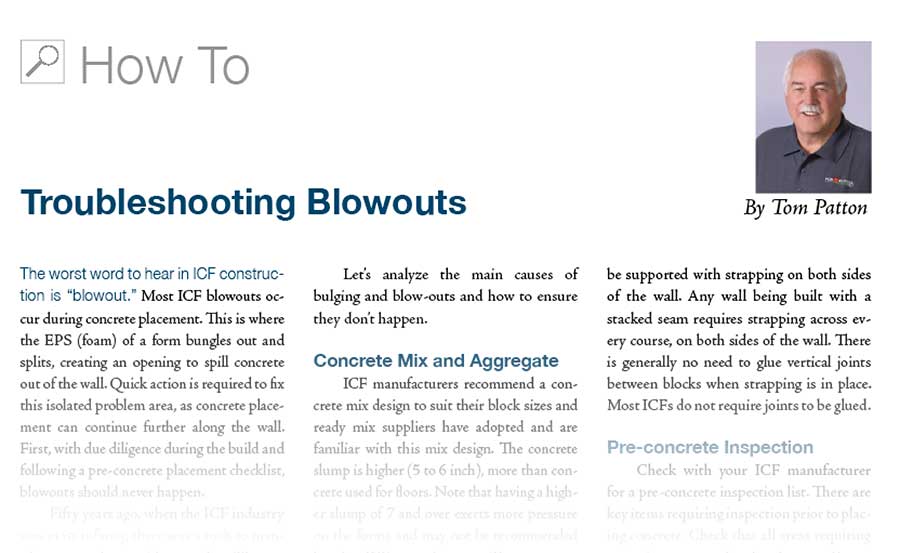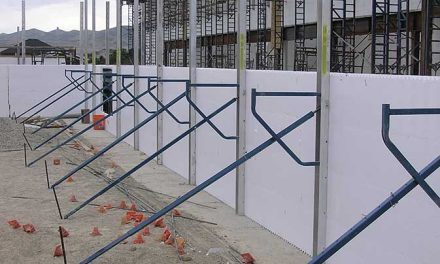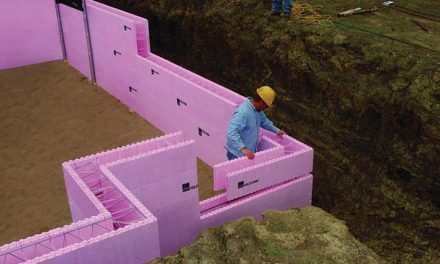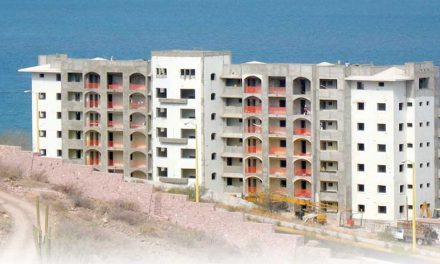The worst word to hear in ICF construction is “blowout.” Most ICF blowouts occur during concrete placement. This is where the EPS (foam) of a form bungles out and splits, creating an opening to spill concrete out of the wall. Quick action is required to fix this isolated problem area, as concrete placement can continue further along the wall. First, with due diligence during the build and following a pre-concrete placement checklist, blowouts should never happen.
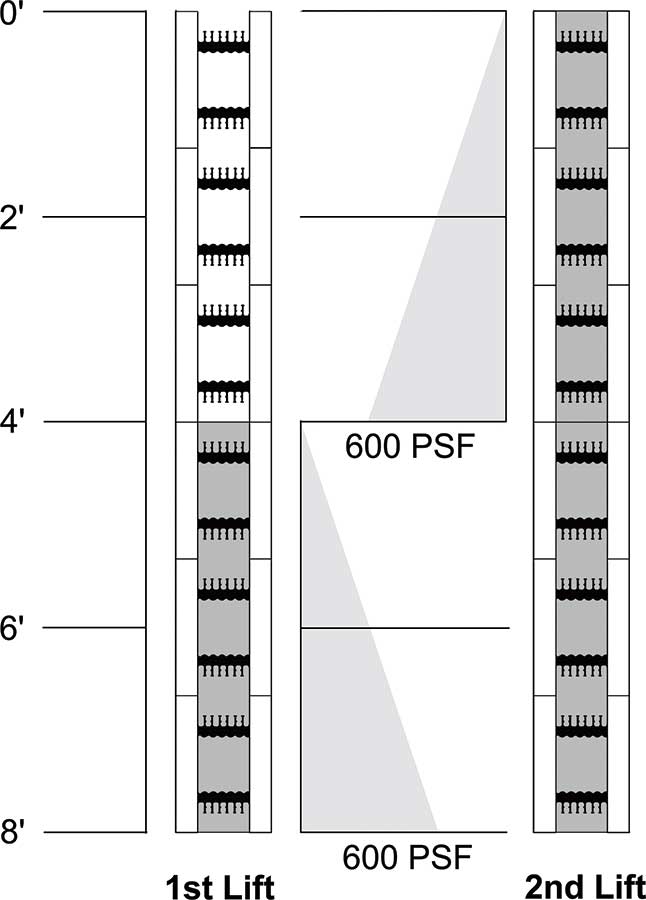
Form pressure per lift.
Fifty years ago, when the ICF industry was in its infancy, there was a rush to manufacture products, with more than 80 manufacturers in the fray. This created a quality control issue that was not advantageous to the ICF industry. Subsequently, many ICF projects suffered, due not only from inexperienced installers but from product quality control. This has changed substantially over the last 20+ years. Building codes adopted ICFs, creating acceptability standards. Acceptance criteria, quality control standards, and third-party manufacturing inspections all ensure products meet these standards and are approved to these specific requirements. This means that ICF blocks with a Code Compliant Research Report (CCRR) are approved and meet these standards and the building code.
In addition to meeting code and quality control standards, it is equally, if not more important, that contractors/installers follow proper building practices, adhere to manufacturer’s instructions, and follow proper safety protocols. If these instructions are not followed correctly, it can lead to blowouts that cause delays, losses in time and money, and possible safety issues. It is a reality, investigations show, that most blowouts are from some sort of contractor/installer oversight or procedural error.
Let’s analyze the main causes of bulging and blow-outs and how to ensure they don’t happen.
Concrete Mix and Aggregate
ICF manufacturers recommend a concrete mix design to suit their block sizes and ready mix suppliers have adopted and are familiar with this mix design. The concrete slump is higher (5 to 6 inch), more than concrete used for floors. Note that having a higher slump of 7 and over exerts more pressure on the forms and may not be recommended by the ICF manufacturer. The aggregate in the mix design is smaller for 4-inch and 6-inch ICF forms. A lower-slump concrete with larger aggregate may damage the forms, possibly causing a blow-out. Always follow ICF manufacturer specifications on the concrete mix design and tell your ready mix supplier that the concrete is for an ICF wall.
Block Installation Inspection
Some blocks may be damaged during storage or site movement. Have the crew do a quick inspection of each block, before being installed, to ensure there are no cracks, broken corners, or webs. Do not install a block with a broken web; instead, cut the block for use as a smaller block. Any block that is damaged can be installed, but mark it to be strapped. As the block is being installed, make sure any area that requires strapping is clearly marked with a big, noticeable X.
Block Cuts
A typical ICF has the webs spaced at 8 inches on center. All blocks have embossed cut lines on the face. Cutting on these lines maintains the interlock for the next course. If a block is cut with more than 4 inches of EPS from the web, that block will need to be supported with strapping on both sides of the wall. Any wall being built with a stacked seam requires strapping across every course, on both sides of the wall. There is generally no need to glue vertical joints between blocks when strapping is in place. Most ICFs do not require joints to be glued.
Pre-concrete Inspection
Check with your ICF manufacturer for a pre-concrete inspection list. There are key items requiring inspection prior to placing concrete. Check that all areas requiring strapping are completed and secure. Strapping is typically a 1×6 with two screws into each web on either side of the cut block, on both sides of the wall. Opening bucks are strapped and supported. Pre- inspection is very important to address anything that may be an issue during concrete placement. This falls under the adage of “measure twice and cut once.”
Concrete Placement
There are specific procedures for placing concrete in an ICF wall and the installer must be following these procedures for safety and control of the build. Discuss the placement with the pump truck operator, who will most likely have experience in placing concrete in ICFs. The pump operator controls the flow rate, which is based on the day’s temperature. Discuss the placement plan with the pump operator and understand the safety rules and signals. Concrete in ICFs is placed continuously in lifts of 3 to 4 feet at a time. Lifts alleviate the liquid pressure of the concrete on the walls. Going around the perimeter in lifts allows each lift to set-up enough to provide support for the next lift and reduce the internal concrete pressure. Decide from your wall height (8 to 10 feet) how many lifts are required to fill to the top of the wall.
The other key procedure during placement is to keep watching the concrete inside the wall as it flows. Make sure it doesn’t get clogged somehow on rebar, which could create a void. Don’t place concrete directly into a corner or a T-section. Instead, let the concrete flow into these areas. Note that some ICF corner forms are weaker than others and may require additional exterior support. The exterior face directly at a T-wall intersection will require additional support. Similarly, watch the concrete flow around openings. Constantly watching the flow will allow you to quickly detect any issues.
Concrete Consolidation
Every ICF requires consolidation, and the person doing the consolidation must understand the seriousness of this task. Most blowouts occur from over consolidation, which increases the liquid pressure of the concrete at that point, potentially causing bugging or a blowout. Have the right equipment and educate the operator on the technique for inserting the vibrator into the concrete. Insert quickly and withdraw slowly and evenly. The vibrator operator should be following behind the concrete placement on every lift. Each lift must be consolidated into the previous lift. Consolidation removes the air entrained within the concrete and eliminates voids. Check with the ICF manufacturer regarding consolidation tools and methods.
Preparation
Prior to concrete placement, be prepared for any problems. Both the crew member placing concrete and the vibrator operator must be watching for any potential problems. Instruct crew on the procedure to address a possible blowout. Have strapping and tools ready. If an issue occurs, simply move concrete placement further down the wall and continue while the issue is corrected. The crew will need to clean the wall, put the EPS back in place, and securely strap and support the area. The area will then be ready for concrete on the next pass.
Education
In selecting an ICF, review the documentation, training, and technical support available. This information is vital on how the project is to be built successfully. When required, seek an experienced ICF installer for advice or assistance.
In Summary
Major ICF manufacturers have published and provide installation procedures and training materials, drawn from experience and testing, to ensure their products are installed correctly and safely. There is no need to reinvent the wheel or take advice from a chat line for concrete placement or consolidation. Use the resources available from the ICF manufacturer, distributor, or technical advisor.
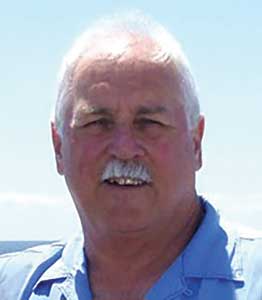
Tom Patton
Tom Patton had a 30-year architectural design background prior to joining the ICF industry in 2001 with the technical support department at ARXX. Over the last 20 years, Tom has worked with major ICF companies developing technical documentation, application details, and training programs, as well as consulting and promoting ICFs with various associations including the ICFMA, NRMCA, and codes and standards committees. Currently, Tom is Corporate Brand Ambassador for Fox Blocks and co-developer of the Fox Blocks Integrated Learning Center.

